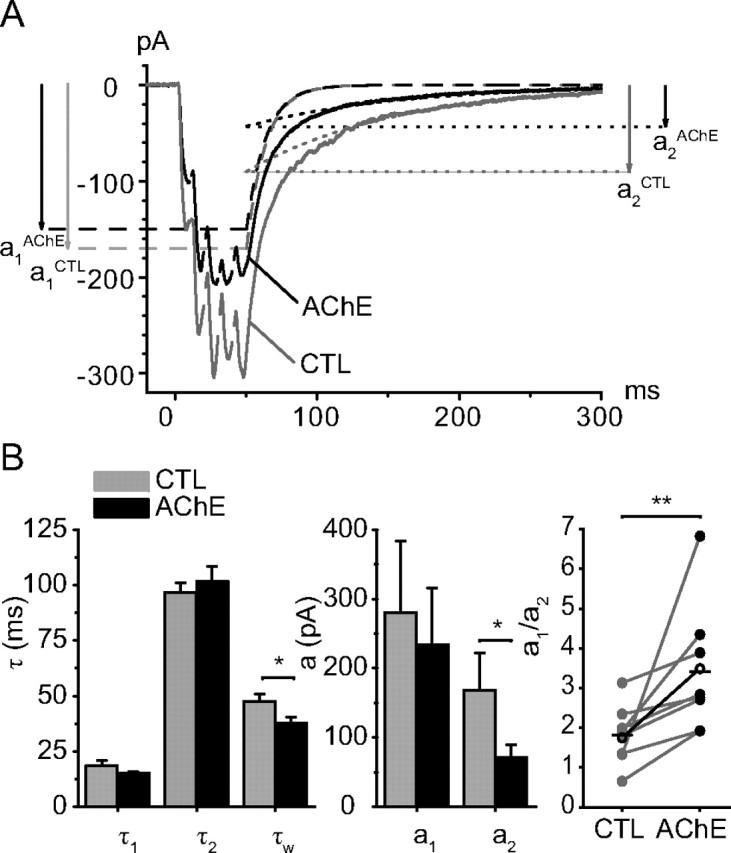Figure 2.

Exogenous AChE selectively reduces the slow component of the EPSCs. A, Average of 10 responses to a 5p-train in control conditions (CTL) and 7 min after addition of AChE (20–40 mg/L). The amplitude of the response decreased and its decay was shortened. Decomposing the decay into two components indicated that the <a1,τ1> component was hardly changed (a1(CTL) = −170 pA, a1(AChE)= −150 pA, τ1(CTL) = 13.3 ms, τ1(AChE) = 13.6 ms) and that τ2 is also little affected (τ2(CTL) = 106 ms, τ2(AChE) = 106 ms). The main effect of AChE is the reduction of the amplitude of a2 from a2(CTL) = −92 pA to a2(AChE) = −43 pA. The experiment illustrated was conducted at 26°C. B, The bar graphs indicate that AChE did not change the time constants of decay of the fast component (τ1(CTL) = 18.5 ± 2.5 ms and τ1(AChE) = 15.3 ± 0.7 ms, n = 9; p = 0.23) and did not change the decay of the slow component (τ2(CTL) = 96.7 ± 4.3 ms and τ2(AChE) = 101.6 ± 6.9 ms, n = 9; p = 0.33). AChE reduced the amplitude of the slow component from a2(CTL)= −167.7 ± 54.6 pA to a2(AChE) = −71.2 ± 18.7 pA (n = 9; p = 0.03) much more than that of the fast component (a1(CTL)= −280 ± 104 pA and a1(AChE)= −234 ± 81 pA, n = 9; p = 0.09). As a result the value of a1/a2 increased from 1.8 ± 0.2 to 3.4 ± 0.5 (p = 0.02) and the decay was shortened (τw(CTL) = 47.4 ± 3.4 ms and τw(AChE) = 36.6 ± 2.9 ms, n = 9; p = 0.02).
